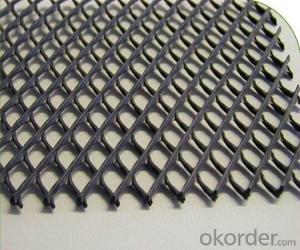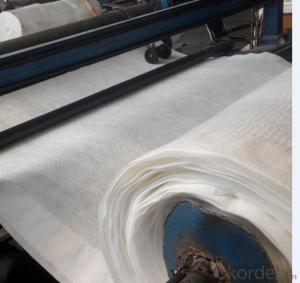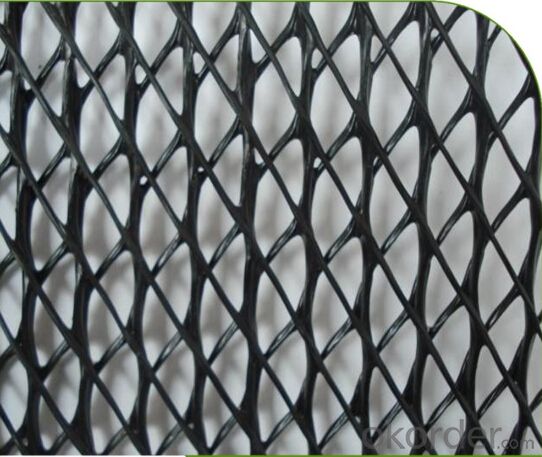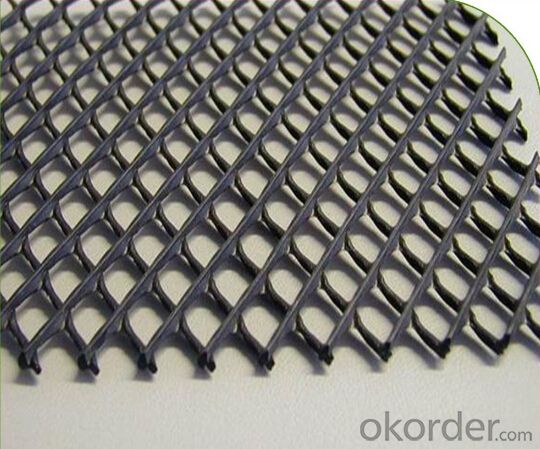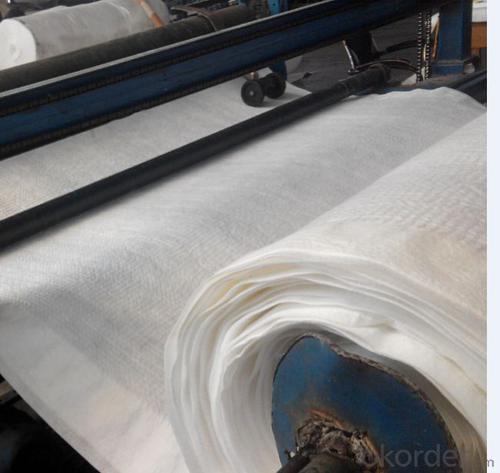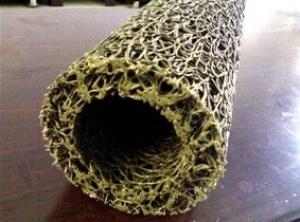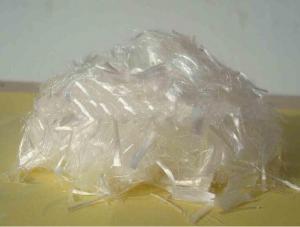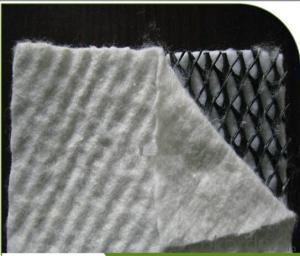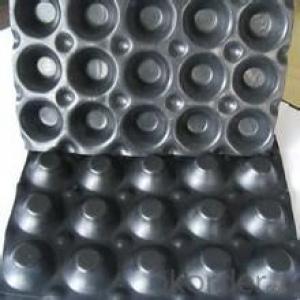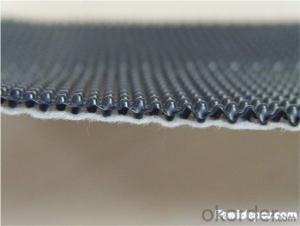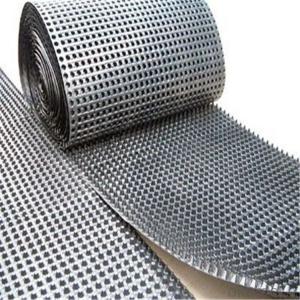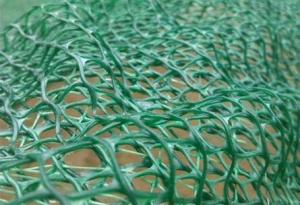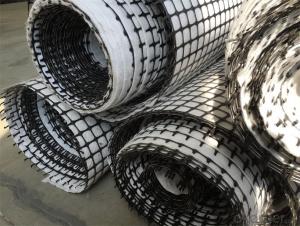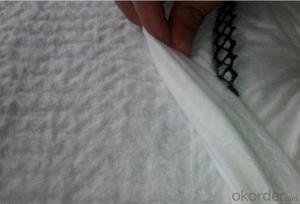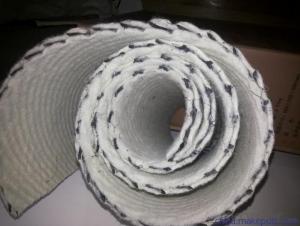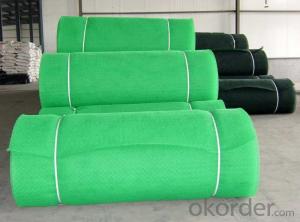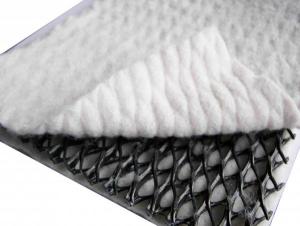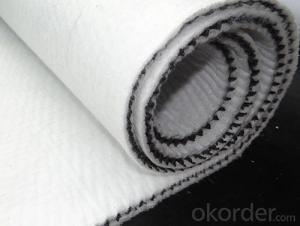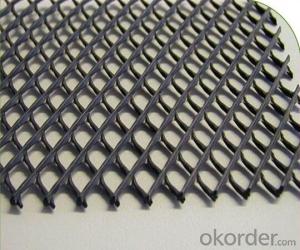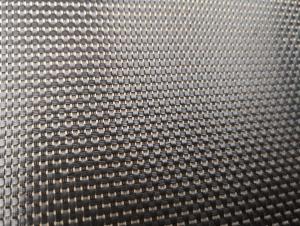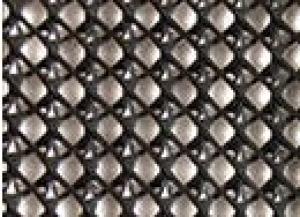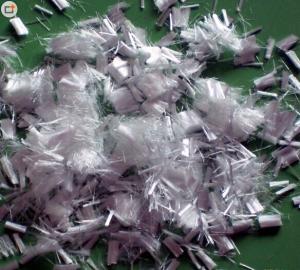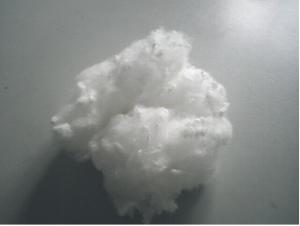Tri Dimensional Composite Drinage Geonet from 750g/m2 to 1600g/m2
- Loading Port:
- Qingdao
- Payment Terms:
- TT or LC
- Min Order Qty:
- 2000 m²
- Supply Capability:
- 200000 m²/month
OKorder Service Pledge
OKorder Financial Service
You Might Also Like
Tri Dimensional Composite Drinage Geonet Introduction:
Geonet-geotextile Drainage Geocomposites are engineered to replace costly, conventional open graded aggregate and/or perforated- pipe subsurface drainage systems. The Geonet-geotextile Drainage Geocomposite is created by laminating a filtration geotextile on one or both sides of a Geonet. Geocomposite Drainages have reached acceptance as state-of-the-practice because they provide sufficient in-place drainage and offer reduced material cost, installation time and design complexity over conventional systems.
Tri Dimensional Composite Drinage Geonet Specifications and technical parameters:
Item | Unit | |||||||
1200g | 1400g | 1600g | 1800g | 2000g | ||||
1 | Compound Weight of Unit Area | g/m2 | ≥1200 | ≥1400 | ≥1600 | ≥1800 | ≥2000 | |
2 | Compound Thickness | mm | ≥6.0 | ≥7.0 | ≥8.0 | ≥9.0 | ≥10.0 | |
3 | Compound Tensile Strength | KN/m | ≥16.0 | ≥16.0 | ≥16.0 | ≥16.0 | ≥16.0 | |
4 | Compound Hydraulic Conductivity | m2/s | ≥1.2×10-4 | ≥1.2×10-4 | ≥1.2×10-4 | ≥1.2×10-4 | ≥1.2×10-4 | |
5 | Net and Non-woven Geotextile Peel Strength | KN/m | ≥0.3 | ≥0.3 | ≥0.3 | ≥0.3 | ≥0.3 | |
6 | Net Thickness | mm | ≥5.0 | ≥5.0 | ≥6.0 | ≥7.0 | ≥8.0 | |
7 | Net Tensile Strength | KN/m | ≥13.0 | ≥15.0 | ≥15.0 | ≥15.0 | ≥15.0 | |
8 | Non-woven Geotextile Weight of Unit Area | g/m2 | ≥200 | ≥200 | ≥200 | ≥200 | ≥200 | |
9 | Non-woven Geotextile Permeability | cm/s | ≥0.3 | ≥0.3 | ≥0.3 | ≥0.3 | ≥0.3 | |
10 | Width | m | 2.1 | 2.1 | 2.1 | 2.1 | 2.1 | |
11 | Roll Length | m | 30 | 30 | 30 | 30 | 30 | |
Tri Dimensional Composite Drinage Geonet Application:
1) Landfill drainage;
2) roadbed and road drainage;
3) railway drainage;
4) tunnel drainage,
5) underground structure drainage,
6) the retaining back wall drainage;
7) gardens and sports ground drainage
Tri Dimensional Composite Drinage Geonet Features:
1)Excellent drainage function, can bear long time hige press load
2)High tensile and shear strength
3Reduce the rate geotextile embedding into the core of geonet, can protect long time stable water conductivity
4)Tri-dimension composite geonet for drainage can bear more than 2000kpa compression load
5)Its anti-compression capacity is much larger than common geonet for drainage
6) Certificate :ISO14001:2004, ISO9001:2008
FAQ
1. Which payment do you accept?
For you convinience,our payment can be L/C,TT
2. Is free sample available?
We can supply free samples if you need.
3. How about your quality?
We have strict quality control system, we make testing on incoming raw material and finished products. Your third party testing is also welcomed. With high quality, our products are used on government projects at home and abroad. Our product quality is accepted by clients from all over the world.
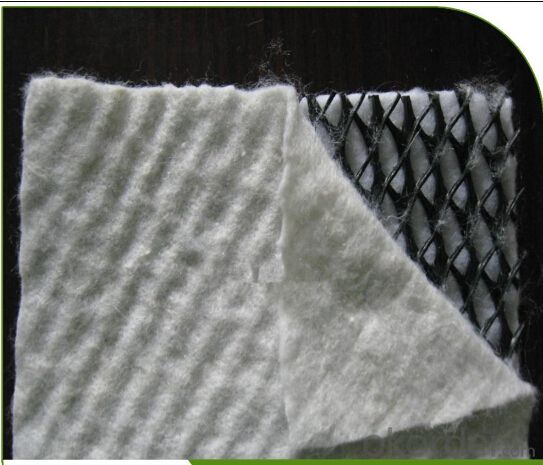
- Q: What are the advantages of using geomembranes for secondary containment?
- Geomembranes offer several advantages when used for secondary containment. Firstly, they provide an impermeable barrier that prevents the leakage of hazardous materials and pollutants into the surrounding environment. This helps in protecting the soil, groundwater, and nearby water bodies from contamination. Secondly, geomembranes are highly durable and resistant to weathering, UV radiation, and chemical exposure. This ensures long-term effectiveness and reduces the need for frequent maintenance or replacement. Additionally, geomembranes are flexible and can conform to irregular surfaces, making them suitable for various containment applications. They can be easily installed, customized, and repaired, allowing for efficient and cost-effective containment solutions. Furthermore, geomembranes are available in different materials and thicknesses, enabling the selection of a specific liner that best suits the requirements of the containment system. This versatility allows for the customization of secondary containment solutions based on the specific needs and potential risks of the stored materials. Overall, the advantages of using geomembranes for secondary containment include reliable protection against leaks, durability, flexibility, ease of installation, and customization options, making them a preferred choice for ensuring environmental safety and regulatory compliance.
- Q: Are there any earthwork products specifically designed for golf course construction?
- Yes, there are earthwork products specifically designed for golf course construction. These products include specialized soil mixes, turf reinforcement mats, drainage systems, and golf course construction equipment.
- Q: What is the purpose of using geotextiles in mining reclamation projects?
- The purpose of using geotextiles in mining reclamation projects is to control soil erosion, stabilize slopes, and promote vegetation growth, ultimately restoring the disturbed mining sites to their natural or functional state. Geotextiles act as a barrier between the soil layers, preventing erosion caused by wind and water. They also provide structural support to steep slopes, reducing the risk of landslides. Additionally, geotextiles enhance water filtration, improve soil quality, and create a favorable environment for plant growth, aiding in the successful rehabilitation of mining areas.
- Q: Can geosynthetics be used for lining fish ponds?
- Yes, geosynthetics can be used for lining fish ponds. They are commonly used as liners in various environmental and agricultural applications, including fish ponds. Geosynthetics provide an effective barrier to prevent seepage and leakage, maintaining water levels and quality in the pond. They are durable, flexible, and resistant to degradation, making them suitable for long-term use in fish pond lining.
- Q: Can earthwork products be used for constructing athletic fields?
- Yes, earthwork products can be used for constructing athletic fields. Earthwork products, such as soil and aggregates, are commonly used for grading, leveling, and creating a stable foundation for athletic fields. These products can help ensure proper drainage, surface stability, and overall field performance, making them suitable for athletic field construction projects.
- Q: Can geocells be used for load support in pavements?
- Yes, geocells can be used for load support in pavements. Geocells are three-dimensional honeycomb-like structures made from high-density polyethylene (HDPE) that are filled with soil, aggregate, or other materials. They provide confinement and stabilization to the fill material, increasing its load-bearing capacity and reducing lateral movement. Geocells are an effective and sustainable solution for enhancing pavement performance, reducing rutting, and improving overall road stability.
- Q: Can earthwork products be used for constructing agricultural drainage systems?
- Yes, earthwork products such as soil, clay, and gravel can be used for constructing agricultural drainage systems. These materials can be used to create trenches, ditches, or tile drains to efficiently remove excess water from agricultural fields, improving soil conditions and preventing waterlogging.
- Q: Are earthwork products suitable for golf course construction?
- Yes, earthwork products are suitable for golf course construction. Earthwork products such as topsoil, sand, and gravel are essential for shaping and building the golf course features like fairways, greens, and bunkers. These materials help create the desired contours, drainage systems, and playing conditions necessary for a well-designed and maintained golf course.
- Q: Can earthwork products be used for constructing wildlife habitats?
- Yes, earthwork products can be used for constructing wildlife habitats. Earthwork products such as soil, gravel, and rocks can be used to create various features in wildlife habitats, including mounds, berms, ponds, and burrows. These features can provide shelter, nesting sites, and foraging opportunities for different species of wildlife. Additionally, earthwork products can be used to shape the landscape, creating diverse topography that supports a wide range of habitats and ecosystems for wildlife.
- Q: What are the advantages of using geocells for load support in pavements?
- There are several advantages of using geocells for load support in pavements. Firstly, geocells provide increased structural stability and load-bearing capacity to the pavement, making it more durable and capable of withstanding heavy traffic loads. Secondly, geocells distribute the load more evenly across the pavement surface, reducing localized stresses and preventing rutting and deformation. Additionally, geocells can be easily installed and require minimal maintenance, reducing construction and maintenance costs. Moreover, geocells enhance the overall performance of the pavement by improving drainage and preventing the loss of base materials, thereby increasing the lifespan of the pavement.
Send your message to us
Tri Dimensional Composite Drinage Geonet from 750g/m2 to 1600g/m2
- Loading Port:
- Qingdao
- Payment Terms:
- TT or LC
- Min Order Qty:
- 2000 m²
- Supply Capability:
- 200000 m²/month
OKorder Service Pledge
OKorder Financial Service
Similar products
Hot products
Hot Searches
Related keywords

